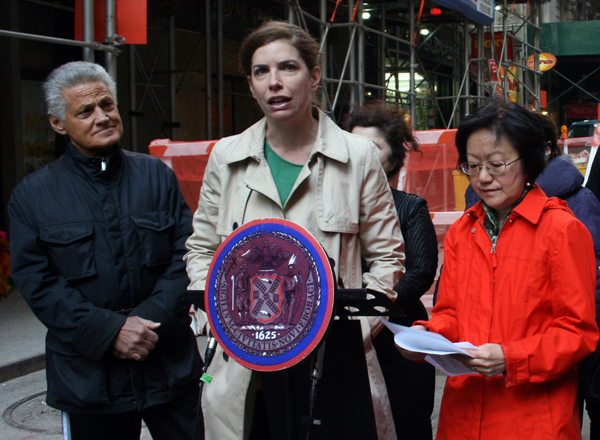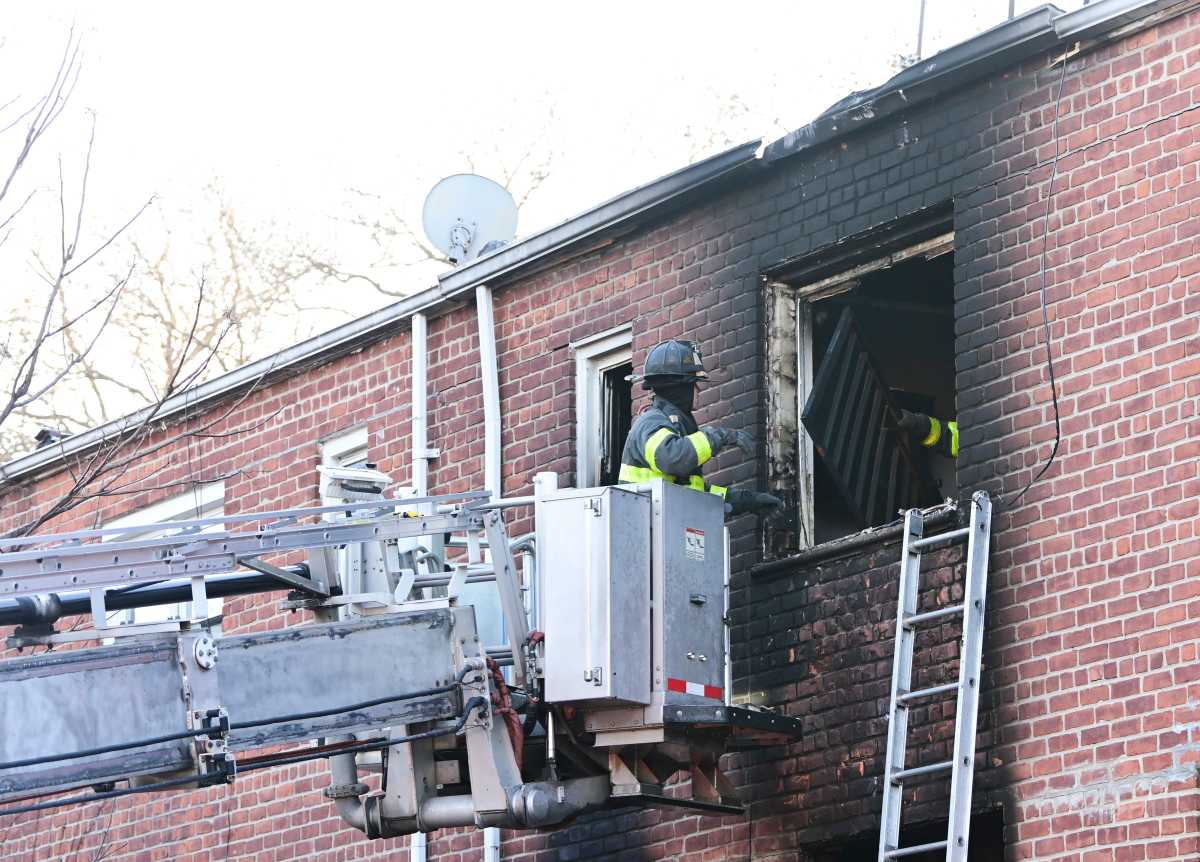
BY ALINE REYNOLDS | As a major staff reduction at the Lower Manhattan Construction Command Center looms, Downtown residents, business owners and politicians are hoping to convince the government that the cost-saving measure would be disastrous for their neighborhood.
But officials familiar with the downsizing contend that the city-state agency will continue to carry out the core services local residents have come to depend upon.
Just three of L.M.C.C.C.’s seven full-time employees will stay on once the agency, which is tasked with coordinating Downtown’s numerous construction projects, is consolidated. The layoffs will occur on a rolling basis between now and late May, according to L.M.C.C.C.’s Deputy Executive Director, Joe Simenic.
The consolidation, which entails cutting down on the L.M.C.C.C.’s administrative operations, is a smart move in that it will save the city and state hundreds of thousands of dollars annually, according to Simenic, who with his colleagues has been prepping for the changes.
“Everybody won’t be leaving at one time,” said Simenic. “What we’ve been doing the last few weeks is making sure that we transition their roles appropriately to the existing staff and remaining consultants, to make sure we maintain our core functions.”
The consolidation will also involve moving the remaining staff, including Simenic, External Relations Director Robin Forst, and Capital Planning and Construction Coordination Director Dave Frucher, to the Port Authority of New York and New Jersey’s Downtown office at 115 Broadway.
The downsizing was supposed to take place by March 31, but Simenic said that deadline, which marked the end of the state’s 2011-12 fiscal year, was artificially designated.
“That date was sort of informal in the first place,” said Simenic. “As you go through the process of consolidating and altering your operations, you go at a pace that accommodates the successful and seamless transition.”
Simenic stressed that the L.M.C.C.C. would remain an independent agency.
“We should be careful not to confuse synergies between agencies as an elimination of independence,” said Simenic.
In a written statement, Port Authority Spokesperson Ron Marsico said the L.M.C.C.C. would maintain “the same high standards of service to the community,” but at a lower price tag.
The Port Authority together with the Lower Manhattan Development Corporation will take over the agency’s administrative duties, according to Marsico.
“The Port Authority will leverage existing agency resources to help carry out this work and to ensure the L.M.C.C.C.’s obligations to Lower Manhattan are met,” said Marsico. “For instance, the indefensible waste of having a separate L.M.C.C.C. web designer, when the L.M.D.C. and the Port Authority have their own web/IT people who can perform L.M.C.C.C. work at no additional cost, will come to an end.”
The L.M.C.C.C. currently commissions and supervises the work of five full-time consultants and one part-time consultant, all of whom will stay on as outside advisers, according to Simenic. The consultants are responsible for supporting the agency’s environmental compliance and construction coordination work.
In the 2011-12 fiscal year, the L.M.C.C.C. spent more than $2 million on commissioned consultant work, according to Marsico. “That work will continue under L.M.C.C.C. staff oversight, but at lower cost,” he said.
Downtown stakeholders and politicians are nevertheless anxious about the downsizing, fearing that it could jeopardize the L.M.C.C.C.’s ability to maintain its range of services through Downtown’s peak construction period, between now and first quarter 2013.
City Council Member Margaret Chin believes the layoffs are unacceptable. The agency, she noted, has not only helped to mitigate noise and other construction-related hassles that have plagued neighborhood residents and business owners over the years, but it has saved the city hundreds of millions of dollars by expediting and overseeing construction.
“The Governor and the Mayor cannot expect an agency to be able to coordinate all this work with just three skeleton staff,” said Chin, who wrote to Governor Andrew Cuomo in February asking him to reconsider the decision.
Having received no reply from Cuomo, Chin resent the letter earlier this week.
A spokesperson for Cuomo said the Governor is reviewing the request but declined to comment further.
The L.M.C.C.C. came to the rescue as recently as last week, when Forst facilitated an urgent visit to John Street by a NYC Department of Transportation official. Following the visit, work performed by the various agencies was curtailed so that ambulances and fire trucks could more easily access the street in the event of an emergency.
“There’s no one single person or agency that watches what’s going on and that keeps an eye on everything, except L.M.C.C.C.,” said 12 John St. resident Tom Ondreicka, who witnessed last week’s turn of events.
It’s critical that the L.M.C.C.C. continue all of its operations, according to Community Board 1 Chair Julie Menin, who voted in favor of the agency’s continued funding at last week’s L.M.D.C. Board of Directors meeting. The L.M.C.C.C.’s approved 2012-13 budget is $7.25 million, down from $9.35 million last year.
“It seems that every year we go through this song and dance about whether or not it’s going to be funded. We really should not have to do that,” said Menin. “If it’s not funded, then residents and businesses will be left to their own devices, having to literally call those agencies to try to get answers and to lodge complaints.”
Assembly Speaker Sheldon Silver, who joined forces with the L.M.C.C.C. to co-organize a John Street stakeholders meeting on March 6, also opposes the layoffs.
“It is essential that as the rebuilding continues, quality of life concerns are addressed in a coordinated, comprehensive manner,” said Silver, “and that members of our community continue to have a meaningful voice in the process.”


































